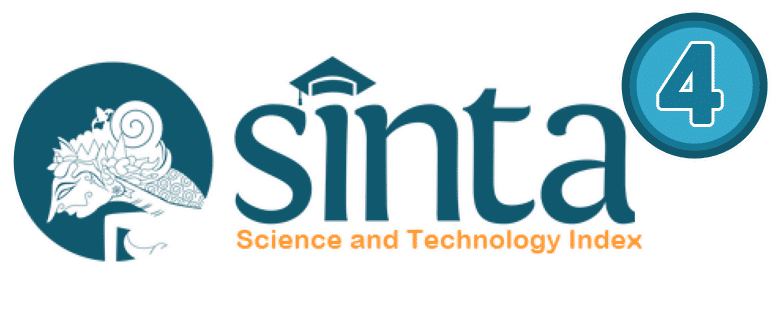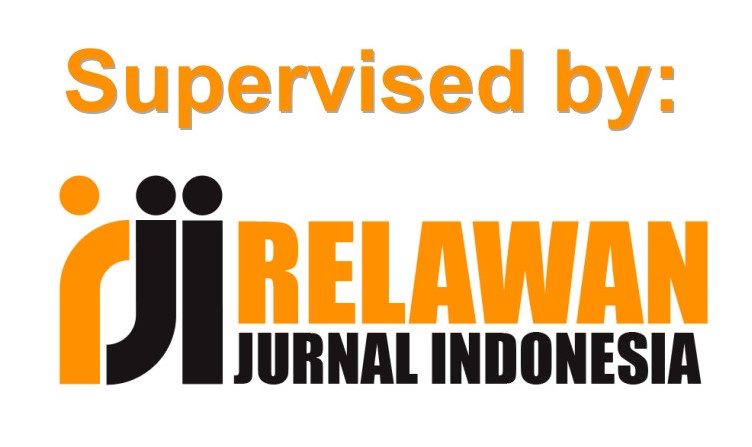The Existence of Sanggar Genessa in Caring for Kolintang Traditional Music
DOI:
https://doi.org/10.24114/grenek.v12i1.40404Keywords:
Sanggar Genessa Kawanua Family Association, Kolintang Music, Jayapura RegencyAbstract
Nowadays, the development of kolintang music is experiencing a phase of saturation, which can be said to be running in place. The marginalization of traditional kolintang musical instruments due to the increasing existence of modern music. In addition, the lack of interest in traditional musical instruments such as kolintang, including the marginalization of traditional musical instruments by modern musical instruments and the inability of traditional musical instruments to gain a place in the hearts of the younger generation. The presence of Sanggar Genessa in the Kawanua Harmony in the Jayapura Regency area seeks to find the best way to preserve traditional kolintang music in the midst of the mainstream of modern music development. Another vision is to introduce traditional kolintang music to the wider community. This research aims to find out the existence of Sanggar Genessa in Jayapura Regency, Papua in preserving traditional kolintang music. This research uses a qualitative approach. The research found that Sanggar Ganessa was established to be a forum for arts and cultural activities, especially reviving traditional kolintang music outside the Minahasa area. The concern and love of the Kawanua Family Harmony who are members of Sanggar Ganesa for kolintang traditional music can be seen from the efforts to transform this music along with developments in the modern era. This musical transformation is based on the life of the Kawanua Family Harmony which is full of love, solidarity and shared responsibility to preserve Minahasa's cultural heritage. This local art treasure has been passed down from generation to generation and is maintained not only as a form of entertainment, but also as a form of mutual care.References
Astuti, S. I., Arso, S. P., & Wigati, P. A. (2015). Analisis standar pelayanan minimal pada instalasi rawat jalan di RSUD Kota Semarang. Jurnal Kesehatan Masyarakat (Undip), 3(1), 103“111. doi: https://doi.org/10.14710/jkm.v3i1.11129
Daud, A. E., Dahlan, D., & Sumardi, L. (2022). Makna dan Nilai-Nilai Yang Terkandung Dalam Pertunjukan Kesenian Alat Musik Tradisional Gendang Beleq. Grenek: Jurnal Seni Musik, 11(2), 40“58. doi: https://doi.org/10.24114/grenek.v11i2.38691
Diniafiat, D., & Loho A. M. (2020). Nilai Filosofis-Kultural Musik Kolintang. Jurnal Budaya Nusantara, 3(2), 99-105. doi: https://doi.org/10.36456/b.nusantara.vol3.no2.a2541
Gaite, T., Malatuny, Y. G., Abdin, M., Labobar, B., & Malatuny, S. (2020). A Comparative Study of Ambonese Classic and Modern Pop Songs. doi: https://doi.org/10.2991/assehr.k.200320.097
Harahap, Z. H., & Sinaga, T. (2021). Komparasi Unsur Musik dan Introduksi Lagu Yamko Rambe Yamko Aransemen Agustinus Bambang Jusan Dengan Budi Susanto Yohanes. Grenek: Jurnal Seni Musik, 10(1), 82“92. doi: https://doi.org/10.24114/grenek.v10i1.26099
Kaseke, P. (2013). Buku Panduan Kolintang. Manado: Petrus Kaseke.
Lalita, E. M. F., & Donsu, A. (2019). Kolintang Music Therapy on Labor in Manado City. Proceeding 2nd Manado Health Polytechnic International Conference, 72“76. https://ejurnal.poltekkes-manado.ac.id/index.php/PMHP2nd/article/view/939
Limbong, H. E. (2018). Enkulturasi Alat Musik Bundengan di SMP Negeri 2 Selomerto Wonosobo. Grenek: Jurnal Seni Musik, 8(1), 45“53. doi: https://doi.org/10.24114/grenek.v8i1.13484
Loho, A. (2017). Andre Sumual: Inovator Musik Kolintang. Manado: Pohon Cahaya.
Mandiangan, P. (2020). Pengenalan Alat Musik Tradisional Kolintang Di Sd Xaverius Iv Palembang. Prosiding Seminar Nasional Pengabdian Kepada Masyarakat - SNPPM 2020, 32-41 https://journal.unj.ac.id/unj/index.php/snppm/article/view/19620
Miles, M. B., & Huberman, A. M. (1992). Analisis Data Kualitatif. Terjemahan Tjetjep Rohendi Rohidi. Jakarta: Penerbit Universitas Indonesia.
Mistortoify, Z. (2021). Revitalisasi Wanita Karier Kota Ngawi Melalui Bermain Musik Kolintang Dengan Aransemen Baru. Abdi Seni, 12(1), 25“35. doi: https://doi.org/10.33153/abdiseni.v12i1.3879
Natalia, C., & Kusniadji, S. (2019). Kegiatan Public Relations Dalam Organisasi Kerukunan Keluarga Kawanua (KKK) untuk Melestarikan Budaya Minahasa. Koneksi, 2(2), 253-260. doi: https://doi.org/10.24912/kn.v2i2.3893
Pegenusa, J., Widiastuti, U., & Hirza, H. (2020). Hand Signs in the Leraning of Traditioinal Angklung Instruments in SMA Negeri 1 Babalan Pangkalan Brandan. Grenek: Jurnal Seni Musik, 9(1), 1“12. doi: https://doi.org/10.24114/grenek.v9i1.17227
Pelealu, G., Komansilan, T., & Munaiseche, C. (2017). Pengembangan Aplikasi Alat Musik Tradisional Kolintang Berbasis Android. Engineering Education Journal-E2J, 5(3), 45-48. http://ejournal.unima.ac.id/index.php/e2j/article/view/1835/0
Putra, R. E. (2019). Eksistensi Musik Kolintang Kayu Dalam Kehidupan PIKPP di PT. Pursi Palembang Sumatera Selatan. Jurnal Sitakara, 4(2), 11-20. doi: https://doi.org/10.31851/sitakara.v4i2.3252
Rumengan, P. (2017). Musik Kolintang Kayu Minahasa: Kajian Komprehensif tentang Sejarah Lahir dan Perkembangan Masa Kini. KEPEL Press.
Rumengan, P., & Hartati, D. S. (2020). Transmutasi, Satu Proses Lahirnya Genre Musik Baru; Studi Tentang Kelahiran Ansambel Musik Kolintang Kayu, Satu Genre Musik di Minahasa. Clef : Jurnal Musik Dan Pendidikan Musik, 1(2), 1-12. doi: https://doi.org/10.51667/cjmpm.v1i2.346
Sinaga, O. (2022). Manajemen Pertunjukan Seni Tradisional Berbasis Keragaman Budaya dan Kearifan Lokal Sumatera Utara. Grenek: Jurnal Seni Musik, 11(1), 91“97. doi: https://doi.org/10.24114/grenek.v11i1.35117
Soputan, F. A. (2020). Aransemen Musik Populer dalam Ansambel Musik Kolintang Kayu Minahasa. Urban: Jurnal Seni Urban Dan Industri Budaya, 4(1), 43“60. doi: https://doi.org/10.52969/jsu.v4i1.63
Tjørhom, O. (2021). Living in communion: visible unity and the Porvoo Common Statement. Theology, 124(5), 332-340. doi: https://doi.org/10.1177/0040571X211043171
Wikarsa, L., & Angdresey, A. (2021). Using Technology Acceptance Model to Evaluate the Utilization of Kolintang Instruments Application. Jurnal Pekommas, 6(1), 33-41. doi: https://doi.org/10.30818/jpkm.2021.2060104
Windewani, M. B. G., & Mistortoify, Z. (2022). Perubahan Fungsi Musik Kolintang di Desa Lembean Minahasa Utara. Gondang: Jurnal Seni Dan Budaya, 6(1), 136“147. doi: https://doi.org/10.24114/gondang.v6i1.32100
Yudha, I. S. (2021). Kolintang, Kesenian Tradisional Minahasa yang Mendunia.
https://www.djkn.kemenkeu.go.id/kanwil-suluttenggomalut/baca-artikel/14198/KolintangKesenian-Tradisional-Minahasa-yang-Mendunia.html
Downloads
Published
Issue
Section
License
Copyright (c) 2023 Ambar Sulistyowati

This work is licensed under a Creative Commons Attribution-ShareAlike 4.0 International License.
Authors published with the Grenek: Jurnal Seni Musik agree to the following terms:
- Authors retain copyright and grant the journal the right of first publication with the work simultaneously licensed under a Creative Commons Attribution License (CC BY-SA 4.0) that allows others to share the work with an acknowledgment of the work's authorship and initial publication in this journal.
- Authors are able to enter into separate, additional contractual arrangements for the non-exclusive distribution of the journal's published version of the work (e.g., post it to an institutional repository or publish it in a book), with an acknowledgment of its initial publication in this journal.
- Authors are permitted and encouraged to post their work online (e.g., in institutional repositories or on their website) prior to and during the submission process, as it can lead to productive exchanges, as well as earlier and greater citation of published work. (See The Effect of Open Access)








